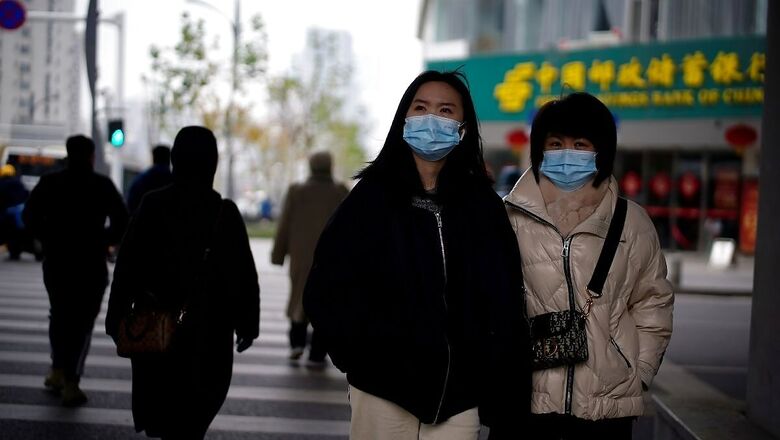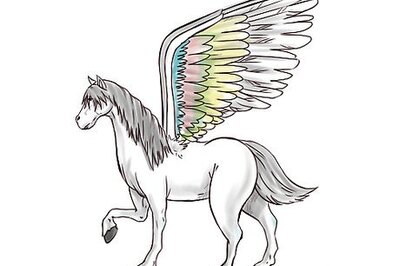
views
Besides the Mars landing, the big news from China last week has been its decennial census whose results were announced by China’s National Bureau of Statistics last Tuesday, May 11. As a country which benefitted from the demographic dividend in the 1980-95 period, the issue now moot are the social, political, and economic consequences of its possibly declining and rapidly ageing population whose dynamics have been skewed by the country’s one-child policy in the 1980s.
The census was completed in December 2020 and it showed that the population grew 5.38 per cent from the 1.34 billion in the 2010 census to a figure of 1,411.78 million. There are reports that have said that the figure actually showed a slight decline, but were revised upward under murky circumstances. The average annual growth rate was down by 0.04 per cent as compared to those revealed by the previous census. This is the lowest rate of increase ever since the People’s Republic of China began data collection in 1953. This puts China on track to be surpassed by India as the most populous country in the world soon.
According to the data, just 12 million babies were born in China in 2020 marking the fourth year in which births have fallen. In 2019, 14.65 million babies were born. The decline of 18 per cent in just one year has been put down to the COVID-19 pandemic, but it is within the trend line that has seen births peak at 25.5 million in 1987 and decline thereafter. China’s fertility rate—the average number of babies a woman will have in her lifetime—now stands at 1.3. While the replacement rate, through which the population will remain stable is 2.1. Japan’s fertility rate was 1.36 last year while that of the EU is around 1.5.
Since the mid-1980s, China had a strict system of permitting only one child per family. One of the major consequences of this was gender selective abortions resulting in a skewed sex ratio. The current census says there are 723.34 million men and 688. 44 million women. The ratio has been improving in recent decades, but is still the cause of some social issues. The single-child norm was loosened only in 2016 to allow couples to have two children. But couples have remained reluctant to have more than one child because of the cost of bringing up children. As it is, educated Chinese women have been delaying marriages, which have also declined since 2014.
Chinese demographers have been warning about this situation, which is now looking quite alarming. In a report issued last year, the Chinese Academy of Social Sciences said that the trends could bring “very unfavourable socio-economic consequences” and called for urgent policy measures. Now according to Peking University Research Professor, Liang Jianzhang, without strong policy intervention, “new births could fall below 10 million, a fertility rate lower than Japan’s”. Indeed, Prof Liang has suggested a reward of 1 million yuan( roughly US $156,00) to each new born. He has suggested that to raise the Chinese fertility rate to the replacement level of 2.1 could require China to spend 10 per cent of its GDP to encourage births.
The authorities may simply lift all restrictions, but experts say much more is needed to be done, ranging from childcare support, tax cuts, financial subsidies, and so on. A supporting move is to extend the retirement age, which in many cases is between 60 for men and 50 for women.
Another set of challenges will accompany this trend, i.e., the rapid ageing of its population. According to the 2020 census figure, there are approximately 264 million people in China in the age group of 60 and over, amounting to some 18.70 per cent of the population, up from 13.3 in the 2010 census. Forecasts say that the population of this cohort will increase to 300 million by 2025 and over 400 million by 2033. According to Prof Yuan Xin of Nankai University, “the ageing of the population is the result of historical laws of population development, which cannot be changed at all.” Indeed, his advice is that the country and its people “must face [the situation]… calmly.”
In the coming decade, the children born under the single-child norm will have to cope with issues related to the ageing of their parents. Though the Chinese have a formal social security system, in practice, many are without any support and depend on their families or the state. The burden of family support will increase, even while social trends indicated “the family’s support for the elderly is weakening.” Then, there is the sheer size of the 60-plus group, which would be around one-third of the population, and would impact social welfare services and public safety management. Already, pensions shortfalls in the poorer and demographically-challenged northeastern states have led to the central government asking the richer and younger southern provinces to help out. One problem is that ageing is happening much more rapidly in China than elsewhere. As of now, both the US and China have a median age of around 38. But by 2050, while the US will be 41, the median age of China will be 46. The age in Japan and South Korea will be above 50, India will be 37.
The census figures also reveal that China is now decidedly urban with a 902 million people (64 per cent) living in urban areas, while 510 million people (36 percent) live in the rural areas. What the figures reveal is a steady process of urbanisation with the share of the urban population rising by approximately 14 per cent in the past decade. The eastern region comprised of nearly 40 per cent of the total population of the country, the central account for another 26 per cent, the northeast for 7 per cent, and the western region for 27 percent. Another important metric was the age of the population—253 million persons in the age 0-14 (18 per cent), 894 million in the age group 15-59 (63 per cent) while those above 65 numbered 191 million (14 per cent).
Another problem area is that of educational attainment. There were 218 million people with university education while the average age of schooling of people aged 15 and above increased from 9.08 to 9.91 years. This means that many of the students had not completed what in India would be class 10. No doubt, Indian figures are worse, but for China which aspires to be an industrial and modern economy, this is an issue.
China’s demographic situation may have been a matter of concern for the specialists, but the government has chosen to kick the can down the road. The political leadership has been trying to juggle various concerns—mounting debt, the trade war with the US, and the effort to restructure the economy. Besides lifting the restrictions on the one-child norm, they have done little to address the problem. Now it has little choice but to deal with an ageing population that will drain the country’s savings, even as China is trying to make consumption the driver of its “high quality growth.” In itself, population decline in a developing country like China should not be a problem. It eases pressure on the environment, enhances the per capita income of the country, lowers the unemployment rate, encourages wage rise, participation of women in the workforce, and generally enhances the quality of life of the population. The one issue is whether fewer people can support a larger number of older persons. Automation and Artificial Intelligence (AI) can inaugurate changes in which an economy could continue to thrive even as its population declines. But it requires agile policy responses to the problem—a problem, which in many ways was created by the government itself.
The article was first published on ORF.
Read all the Latest News, Breaking News and Coronavirus News here. Follow us on Facebook, Twitter and Telegram.

















Comments
0 comment